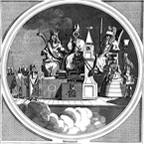Abstract [It]: L’Austria viene spesso considerata come il paese della “grande coalizione”, come sostiene, ad esempio, la monografia di U. Haider-Quercia. Ed è vero che il paese ha conosciuto questo modo di governo, piuttosto raro in Europa per lunghi periodi soprattutto nel primo dopoguerra e poi di nuovo quando né il partito socialista, né il partito del popolo riuscirono ad ottenere maggioranze assolute. Si è allora formata la teoria di una “Costituzione reale” che, fuori quella giuridica, spingerebbe il paese verso questa modalità di assetto istituzionale. Questa concezione è problematica.
Se l’integrazione del suffragio proporzionale in Costituzione spinge verso delle coalizioni in assenza di maggioranza assoluta e in presenza di frammentazione del paesaggio politico, si osserva che la grande coalizione appare in certi contesti storici molto particolari, mentre l’Austria ha anche conosciuta governi di maggioranza assoluta e piccole coalizioni – come anche nel governo attuale. La questione della frammentazione politica o dell’egemonia di un certo partito costituisce un problema non giuridico, ma meramente empirico. Quando le forze politiche s’intendono per governare in intesi informali, il quadro costituzionale appare residuale, ma questo non implica che non sia rispettato. Il residualismo costituzionale costituisce certamente un problema di cultura politica, ma non proprio di diritto costituzionale.
Abstract [En]: Austria is often considered to be the country of the “Great Coalition” and this is the main thesis of the book by U. Haider-Quercia. It is indeed true that this country has been governed for many years in this manner, rather an exception in Europe. This happened mainly in the immediate aftermath of the WW2 and then during periods in which neither of the then dominating parties had obtained an absolute majority in Parliament. This situation prompted the theory of a “Real Constitution”, opposed to the legal frame of the country, according to which there would be stricture pushing to this kind of governance.
This conception is nonetheless highly problematic. It is undoubtably true that the constitutional formalization of proportional suffrage pushes towards the formation of coalitions in absence of clear majorities, one can observe that the so called “great coalition” appears in very particular historical contexts, while Austria has also known governments of absolute majorities as well as small coalitions, as for instance in the present period since 2019.
The question of the fragmentation of the political landscape or of the hegemony of certain political parties is not a legal, but an empirical one. And it is true that in case the major political forces share many common interests and take decisions in informal ways outside of Parliament reduced to ratify what has been rule outside, makes constitutional organs become residual in the political process. Such a development does not, however, imply that the Constitution is not strictly observed. Such a residualism certainly constitutes a problem of political culture, but not, of constitutional law proper.
Scarica il file in formato PDF
SOMMARIO: 1. Premessa. – 2. Non c’è una Costituzione ‘reale’. – 3. Il proporzionalismo costituzionale. – 4. Perché c’era una volta una ‘grande coalizione’. – 5. La fine della grande coalizione e il ritorno della frammentazione del paesaggio politico. – 6. Residualismo costituzionale.






